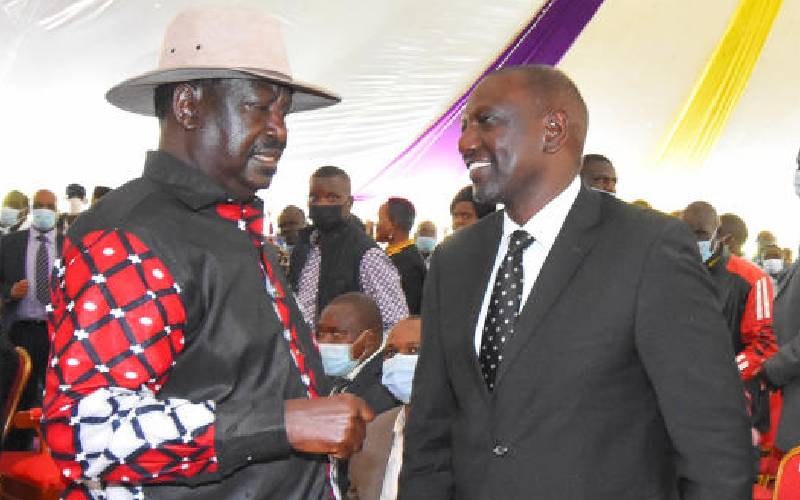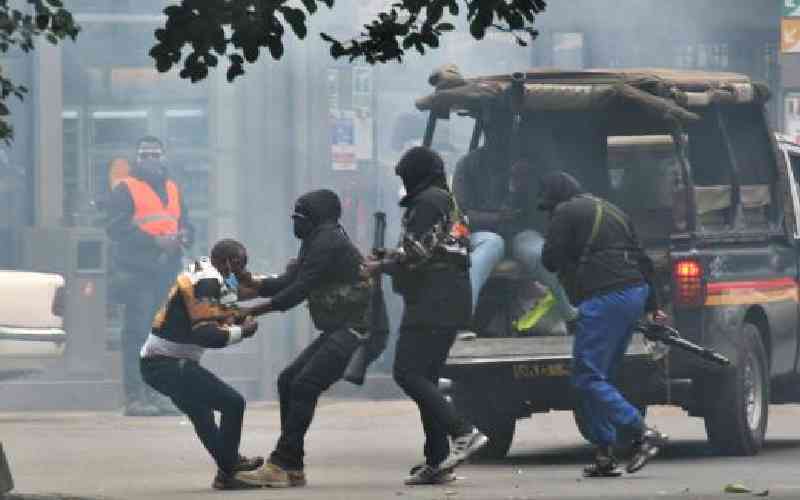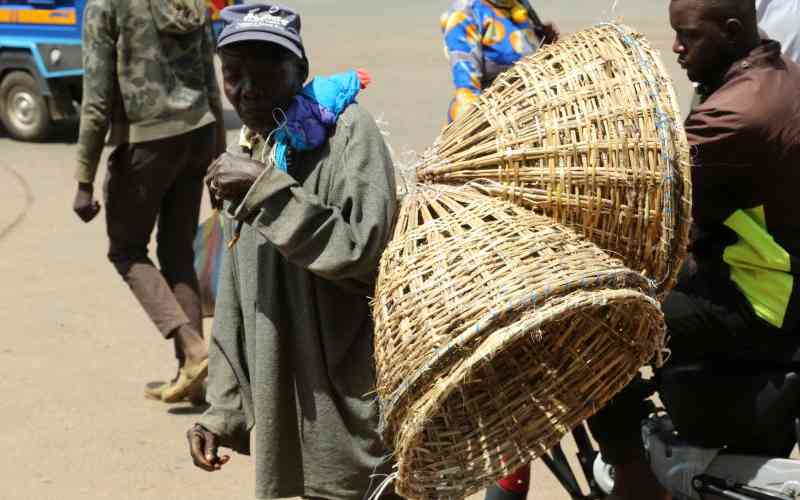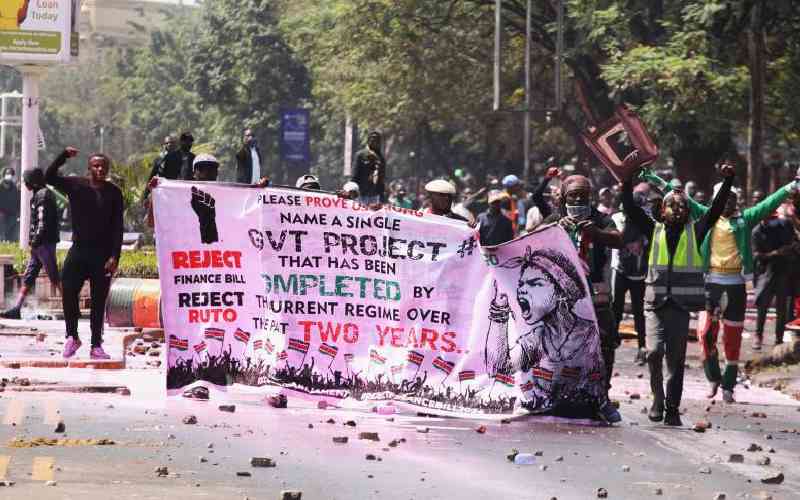
It’s almost a revolution that economics is taking the centre stage in the presidential contest as we head to the 2022 polls.
If there is something we need to celebrate, it’s this paradigm shift. It’s perhaps one of the strongest indicators that Kenya is finally coming of age.
Other indicators include tolerance of debt, more emphasis on rule of law (remember nullification of presidential polls), infrastructure development, protection of women and surprisingly, corruption.
The last one shows that everyone has become modern, has learnt how sweet money is, and how to avoid work (sadly). We can add “no time“ for anyone else except friends or family members.
Let’s not get carried away. All the leading presidential contenders have an economic blueprint.
They have tried to sell them to the electorate anytime they get a chance. And it is not easy because we are used to discussing personalities, and other emotional issues.
Add the fact that economics is not an easy subject.
Economists who call themselves the high priests of social sciences love complicating our lives with esoteric graphs and equations. They lose us, but that increases their mystic.
We shall focus on the economic models of the two leading presidential contenders as defined by the media and some opinion polls.
One of them is Rutonomics which goes by variants such as wheelbarrownomics or bottom-up model.
Railanomics has few variants but seems to be the antithesis of Rutonomics. Let’s open up the curtain and see what they are all about.
Rutonomics focuses on the bottom of the pyramid, the men and women we call hustlers.
They constitute the majority of the population, the informal sector with about 80 per cent of the jobs.
They are self-employed and contrary to common belief, they are very proud of fending for themselves and their families.
Stay informed. Subscribe to our newsletter
In reality, they would wish to emancipate themselves from this uncertainty and get a regular job with a salary and a pension.
Rutonomics wants to help this group move from the bottom of the pyramid to the top, become rich and affluent. He says they would access cheap loans while improving the working environment.
What is not clear is the source of the seed capital to kick start this project. Savings on corruption is one option or higher taxes which would depress the economy.
The anthesis of bottom-up, trickledown leverages on cutting taxes for the top of the pyramid which leads to expansion of their firms and investment.
This trickles down to the bottom of the pyramid through more jobs.
Rutonomics contends that the model had failed.
He cites unemployment and you guessed right the big informal sector or many hustlers. But chill, were Youth Fund, Women Fund and Uwezo Fund not all about that?
Bottom-up assumes the hustlers have the skills and the patient to expand their small businesses into world-class enterprises.
Railanomics key plank is reaching out to sufferers, the economic class below hustlers.
They would get welfare checks of about Sh6,000 per month. Railanomics is a variant of the basic income model. It was tested during the Covid-19 pandemic in the west.
It probably saved many economies from total disaster. An older variant is welfare economics where the unemployed get subsidised food and housing. Railanomics also want to make credit easily accessible to small businesses.
Money saved from corruption is targeted to jumpstart this.
Both models have more points of convergence than divergence.
One, they are messianic, focusing on the downtrodden. Would add they are spiced up with some shades of populism.
Two, they are focusing on the bottom of the pyramid, where the majority of the voters are.
While Railanomics is more about empowering the rural areas to close the gap with urban areas, Rutonomics is more focused on closing the class divide. Remember hustlers versus dynasties?
Three, they are silent on the envisaged reaction of those at the top and middle of the pyramid. Are they willing to pay more taxes to fund Rutonomics and Railanomics?
The middle class is not factored much in the two models, it’s too small both in numbers and resources, read money. Kenya’s economy looks like a vase with lots of money at the top and bottom (because of numbers) and a squeezed middle class.
Four, they both have ignored key stakeholders like multilateral funders, read International Monetary Fund (IMF) or the World Bank. What will they say about the two models?
Five, they are silent on debt, will they take more or close the tap?
Six, the two are cagey on specifics. How will they select those to get the money? A good politician is never too specific.
My fear is that once in office, they will change the tune as their models are filtered through the economic and political realities of the day. No politician can escape that.
I am sure you want to hear my verdict; which is superior and which one we should vote for. We could simulate the two models with real-life data and see which one performs better.
We can also check how the models have fared elsewhere taking cognisance of our uniqueness.
The two models are two sides of the same coin. To decide on the best model, remember economics is one of the facets of our lives. Scrutinise the two contenders deeply entrenched views on other issues.
How will they deal with tribalism when in office? Will they dig into history for grudges? How will they confront corruption and its ghosts?
How will they behave, constrained by the 2010 constitution?
What will they do with the current state of affairs; there are contracts and projects in place?
How is their track record both as individuals and politicians? How will the world react to their win?
 The Standard Group Plc is a
multi-media organization with investments in media platforms spanning newspaper
print operations, television, radio broadcasting, digital and online services. The
Standard Group is recognized as a leading multi-media house in Kenya with a key
influence in matters of national and international interest.
The Standard Group Plc is a
multi-media organization with investments in media platforms spanning newspaper
print operations, television, radio broadcasting, digital and online services. The
Standard Group is recognized as a leading multi-media house in Kenya with a key
influence in matters of national and international interest.
 The Standard Group Plc is a
multi-media organization with investments in media platforms spanning newspaper
print operations, television, radio broadcasting, digital and online services. The
Standard Group is recognized as a leading multi-media house in Kenya with a key
influence in matters of national and international interest.
The Standard Group Plc is a
multi-media organization with investments in media platforms spanning newspaper
print operations, television, radio broadcasting, digital and online services. The
Standard Group is recognized as a leading multi-media house in Kenya with a key
influence in matters of national and international interest.









